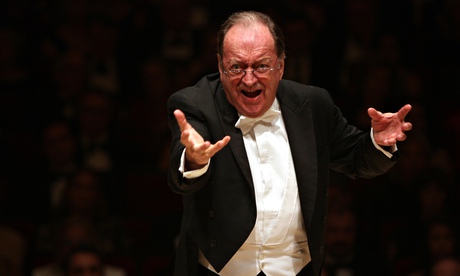
Since Charles Mackerras's superb recordings with the Scottish Chamber Orchestra appeared in 2008, we have been quite spoiled by new accounts of Mozart's last three symphonies, most recently from Frans Brüggen and the Orchestra of the 18th Century (Glossa). Nikolaus Harnoncourt's versions, the first time he's recorded these works with Concentus Musicus Wien, the orchestra he founded in 1953, is the latest of the sets, but typically for Harnoncourt there is much more to it than just fine period-instrument performances of three of the most familiar works in the symphonic repertoire.
After 60 years of studying and conducting these works, Harnoncourt is convinced that Mozart intended the three symphonies, famously composed in just two months in the summer of 1788, as a unity – the parts of a gigantic instrumental oratorio, which was perhaps inspired by a choral work of CPE Bach's, Die Auferstehung und Himmelfahrt Jesu, that he had conducted earlier the same year. That, Harnoncourt's reasoning goes, would explain the thematic connections between the three works, and also why the opening to the E-flat Symphony K543 is conceived like an overture, and why neither that work nor the G minor Symphony K550 has what he calls a "proper" finale, unlike the C major Jupiter Symphony K551, whose last movement seems intended to sum up everything that has come before.
It's a tantalising theory that might explain some of the details of the three works, but which raises almost as many questions as it answers. I'm not convinced that even Mozart would have dared to begin and end what would have been an unprecedentedly vast span of orchestral music in different keys, E flat and C major, even though the G minor of the central panel in this triptych provides a bridge between the two, while if he did conceive of the symphonies as a unity, shouldn't there be evidence that he intended to have them performed as such?
The recordings, thrillingly well played by Concentus Musicus, put these ideas to the test. Harnoncourt goes straight from the last bars of the E-flat Symphony into the opening of the G minor without any break at all, and does all he can to give the finale of the Jupiter the sense of summation and closure his ideas require. Otherwise there are many typical Harnoncourt traits: the fast speeds for the slow movements, the fiercely driven minuets, which end up more like 19th-century scherzos than stately 18th-century dances, and the rhetorical pauses at the beginning of the development section of the G minor's finale, which ratchet up the tension as far as it will go. Whatever you think of the performances and the theories behind them, they are never ever dull.

